Blog
Important How-To’s On Cheese Making Part One: Testing Acid
When making cheese, it may never have occurred to you just how important the process in which we test for acid is. At the point where we are trying to convert the lactose in cheese into lactic acid by using cultures, we can never truly determine if it is working in the way which it is intended to. This is why tracking acidity levels are one of the most accurate ways to know if your culture is working or not.
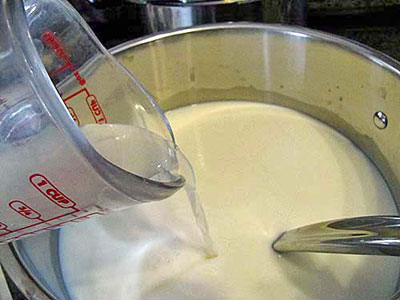
Equipment Needed
It is actually relatively easy to test for acid and you only really need two basic pieces of equipment in which you can find online:
Acid Testing Kit
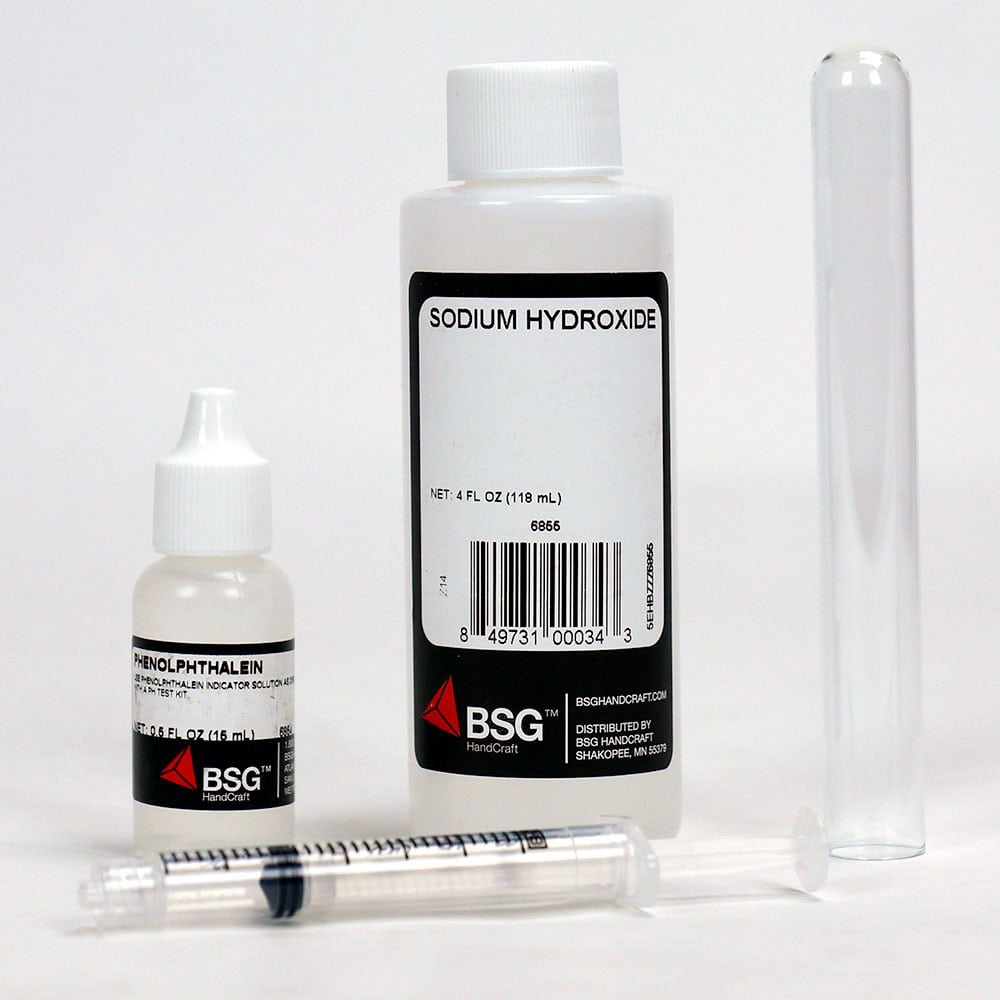
Using inexpensive acid testing kits, you can easily test the acidity of cheese whey, milk, and other dairy products. It is important to invest in one of these kits because increasing acidity levels is an extremely important stage in cheese making and the kit completely eliminates guess work, to ensure delicious results, as intended. Acid testing kits are generally preferred by home cheese makers who won’t be using it frequently
Acidimeter
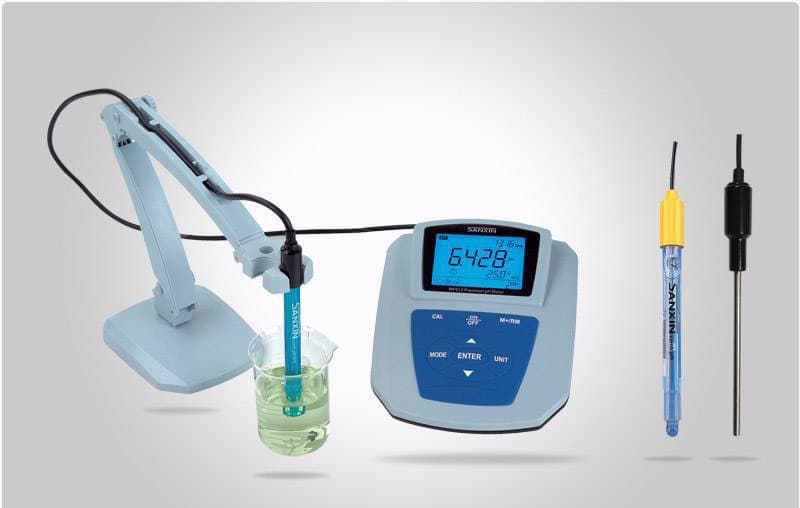
The acidimeter is for more of a serious home cheese maker or farmstead cheese makers who will be making these tastes quite often. Acidmeters make taking titration readings fast and effortless. A small screw clamp allows you to preset drop speed for repeat titration and a squeeze of the bottle will refill the burette back to the zero point.
How The Test Is Done
Depending on which test you are using, here are directions on how to perform these acidity tests:
1. If you are using the acidimeter, fill the glass reservoir with .1N NaOH (Sodium Hydroxide Solution).
2. Then (still using the acidimeter), fill the graduated column with the NaOH by applying pressure to the rubber pump. It will go back to zero with any excess draining going back into the reservoir.
If you are using the acid testing kit, fill the syringe with 3 ml of .1N NaOH
3. You then use a syringe or a pipette and measure out 9 ml of milk.
4. Now pour the sample into a test tube or beaker (held against a white surface).
5. Then add 5 drops of phenolphthalein to the milk sample and gently stir.
6. Use the syringe to let the NaOH run drop by drop into the sample while stirring it in.
7. Continue to do so until the appearance is a light pink color which persists for 10-20 seconds.
8. Now to work out the percentage of acidity, look at the column or syringe and see how many ml of NaOH was used then multiply it by .1 (move the decimal point one place to the left) for the actual TA%
For an example: If the amount of NaOH used was 1.4ml then the titratable acidity is .14%
Chocolate Creations Part Three: Chocolate Butter
If you’re looking for something different for dessert, this is definitely the way to go! Served at room temperature with your favorite bread, you can pass the chocolate butter around and let everyone spread their own chocolate on their toast.

There is so much you can do with this delicious recipe, be it spreading it on your children’s sandwiches for lunch, or passing it around at dinner parties, the possibilities are endless and delicious!
Recipe
Makes: 1/2 cup
What You Need:
1/2 cup fine chocolate from Shisler’s Cheese House, melted
1/2 cup unsalted butter, room temperature
Sea salt
1 tbsp. cocoa powder
What To Do:
Firstly, beat the butter until a smooth consistency, then add the melted chocolate, cocoa powder and a pinch of salt. Mix thoroughly with a mixer until it is well incorporated and smooth in texture.
Serve at room temperature.
It is that easy and all the more delicious.
Rest in Peace Matt Patrick
We would like to take a moment to remember our dear friend Michael Ryan (Matt Patrick), and to offer his family our prayers and most sincere condolences.
Back in the 90s, when we had hit a rough patch as a business, Matt practically endorsed us on his WKDD morning show, for the price of a cheese tray. Thus began a relationship that spanned over two decades. We had the pleasure of going on a Caribbean cruise with he and his wife Paula in 2002, and he hosted our 50th anniversary celebration in 2008. He even conducted his “Long Haul for Hunger” food drives in our parking lot. We may not have become the business we are today without his kind help.
Rest in peace Michael. Thanks for everything. You will be missed.
[youtube https://www.youtube.com/watch?v=WgNHGwlyEtM]
Chocolate Creations Part Two: Homemade S’mores
S’mores are an all-time American favorite, they take us back to times when life was much simpler, sitting by a campfire with our friends, singing campfire songs and burning the marshmallow to our s’more was our only worry. Let’s get back that delicious piece of childhood by taking it to the next level and making the best s’mores you’ll ever taste, using fine chocolate.
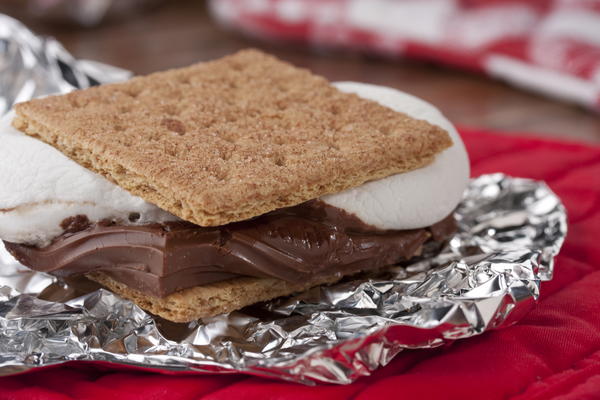
Recipe
Makes: Around 7 S’mores
What You Need:
1 chocolate bar of the finest dark chocolate of your choice.
Marshmallows
Graham crackers
What To Do:
From experience, we all know that how we roast the marshmallows is the most important part of the process. The best way to roast the marshmallow is to toast it without it catching fire but to let the fire mature into a glowing ember around the marshmallow. This allows the marshmallow to be roasted evenly so it is a perfect, gooey consistency on the inside and crispy on the outside. You should slowly rotate the marshmallow over hot coals until it is golden brown on all sides.
In the meantime, set a large piece of chocolate on a graham cracker by the fire so it can begin to warm.
Once your marshmallow is done, scoop it off the stick with the cracker and close together to make a s’more sandwich. Be sure to eat it straight away and don’t be afraid to let out your inner child and get messy with it.
You could also wrap the other s’mores in tin foil to keep them nice and warm and extra gooey.
Chocolate Creations Part One: Dark Chocolate Peanut Butter Cups
You may love store-bought varieties of peanut butter cups, but once you taste these homemade ones, you will never go back! Made with rich dark chocolate, they are oozing with an irresistable flavor that will leave you wanting more.
Recipe
Makes: 24 pieces
What You Need:
3/4 cup smooth peanut butter
15 oz. dark ground chocolate, chopped
1 cup icing or confectioners sugar
2 tbsps. butter
What To Do:
It is fairly simple to create these delicious cups of goodness, which makes it all the better to enjoy.
Start by mixing together the peanut butter, sugar and butter in a mixer until smooth and well incorporated. Then divide into 24 evenly sized balls and set aside.
Now onto the chocolate! Melt the chopped chocolate until smooth over medium heat, be sure to stir it constantly. Take the chocolate off the heat once it is done and coat the inside of mini paper muffin liners with the chocolate using a spoon. Try to get as close to the top of the liners as possible. Once all 24 liners have chocolate, place them in the freezer for 10 minutes.
When they are cold and hardened, remove the chocolate coated liners from the freezer and place a peanut butter ball inside of each one, making them fit around the chocolate if needed.
Then, using a spoon, carefully spoon the remaining warm chocolate over the top of the peanut butter balls and then place back in the freezer for 30 minutes or until they are completely set.
These treats can be kept in the freezer for up to 4 weeks. Enjoy!
A Match Made In Heaven: When Bread Meets Cheese- Part One
Pao de Queijo- Brazil
Usually served at breakfast, this cheese-flavored roll is crispy on the outside and very chewy on the inside. Parmesan is often the cheese of choice in which this roll is made with for a delicious hit of cheese.
Cuñapé- Bolivia
The crispy outside of this Bolivian treat contrasts so well with the soft, cheesy inside. The key ingredients to this delicious bread are either cassava or tapioca flour inside of all-purpose flour that most people use.
Smørrebrød- Denmark
In the U.S, people often call a “Danish” something that consists of sweet cheese and pastry but traditionally in Copenhagen, a Danish is a delicious piece of rye bread which is coated in meats and butter with smoked or pickled fish as well as sliced cheeses.
Banerov Hatz- Armenia
This is a delicious combination of cheese and onions which are spread over a thin piece of dough which looks quite like a pizza. Some might say that it resembles an Alsatian Tarte Flambee.
Panino- Italy
Nobody combines bread and cheese better than Italy! This grilled cheese sandwich is known as Panino and dates back to Milanese sandwich bars called Pani note Che from the 1970s. It can often contain salads and of course, delicious melted cheese.
Paneer Paratha- India
This famous cheese “Paneer” of India is used in this Indian delicacy which is paired with unleavened bread “Paratha”. These two pairs up and get filled with spiced and are fried and served at breakfast or on it’s on for a light meal.
Beer And Cheese Soda Bread- Ireland
Since the Irish love beer and sharp cheese, it is no surprise that their contribution to this list is beer and cheese soda bread. There is no yeast in the soda bread but there are beer and cheese, which is good enough for us. Some people even add bacon to the mix, what could be better?
Toastie- England
For toasties, cheddar cheese is the selected cheese for this English delicacy. It is pretty much England’s version of the grilled cheese from the U.S. However, the difference between toastie’s and grilled cheese is that the toastie is buttered on the inside and is toasted.
Rasgulla- Bangladesh
These little bread balls are sweet and spongy which are served throughout Indian subcultures in Southeast Asia, Bangladesh in particular. Rasgullas are usually made with an Indian cottage cheese known as ‘Chhena’. They are also made with semolina dough and light syrup. People often eat them as a dessert.
Pan de Bono- Colombia
Very similar to a Colombian bagel, Pan de Bono is usually paired with a hot chocolate. It is made out of cornmeal, question, egg, starch and feta cheese.
Lángos- Hungary
Fried bread is one of the most popular street foods in Hungary. However, the sour cream and melted shredded cheese on top make it a lot more savory. A lot of the time, vendors will add other toppings to it or stuff them with requested ingredients.
Flammkuchen- Germany
Flammkuchen translates to flame cake and is quite similar to pizza. Its thin dough is topped with onions, pork, and soft cheese. It is then cooked in a wood-fired oven to create the perfect combination of gooey, crispy cheese bread.
Tiropsomo- Greece
This perfect combination created by Greeks is feta and bread which is best served warm. It is usually served with dinner, however, leftovers can be reheated to accompany breakfast.
Croque Monsieur- France
Despite this sandwich not being able to exist without the ham, it still is best known for its cheese as well. The French cheese is similar to Gruyere with its nutty flavor which is placed in between two slices of bread and topped with nutmeg. It is then baked, broiled and served.
Khachapuri- Georgia
This popular snack is eaten instead of pizza in Georgia. It is made with sugar, dry yeast, flour, salt, and olive oil. It is topped with lots of butter, eggs and feta cheese and a melty cheese. Yum!
Pasteurized Or Unpasteurized- Which Is Best?
At Shisler’s Cheese House, we home a number of cheeses soft, hard, blue- you name it. These cheeses are either made with pasteurized or unpasteurized milk, it usually comes down to the cheesemakers choice, however, some regulations restrict cheesemakers, for example, Stilton has to be made with pasteurized milk and Comte, which has been subject to many controversies, has to be made using unpasteurized milk.
The biggest wonders that come up when discussing the two kinds of milk are first, is pasteurized milk safer than unpasteurized milk? Secondly, does cheese being made with unpasteurized milk taste better?
The most important subject to discuss is obviously if pasteurized milk is safer. It is not an easily answered question, you need to look at the risks and safety concerns surrounding unpasteurized milk, first.
It is common that cheesemaking rooms will contain lots of different bacteria, mainly good bacteria, but then there are quite a few bad bacterias. Some of the bad bacterias that may be present can contaminate milk or cheese with E-coli, Salmonella, and Listeria. However, there are ways to keep these under control and minimize the risks. Some of these ways are actually part of the cheesemaking processes, such as salt dehydrates, these help a lot because a lot of bacteria requires moisture to thrive. Other processes include appropriate procedures during the handling of the milk, the cheesemaking and the maturing of the cheese, shipping, and packaging.
What Is Pasteurisation?

Pasteurization is the process of heating the milk to around 160 degrees Fahrenheit for 15-25 seconds. This is to kill the pathogens which were mentioned above, not only that, but it kills pretty much everything else, which can be bad as some are important in cheesemaking as they act as a natural defense which comes from the milk. This process also allows for more errors as cheesemakers can become complacent which increases contamination risks. However, that being said, all cheesemakers that Shisler’s Cheese House works with, are never complacent and work to a high and safe standard at all times.
The main thing we believe is that with the safe and controlled handling of milk and cheese, whether it is pasteurized or not, the outcome will be the cheese that is safe to eat, with no significant risks either way.
Does Unpasteurised Milk Taste Better?
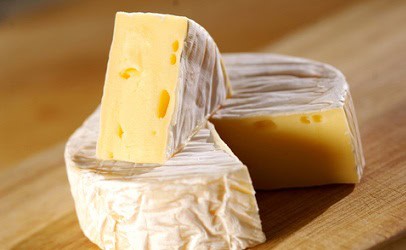
This question is equally as challenging as the previous one. Tying it back into how the process of pasteurization kills all bacteria, good and bad, a lot of friendly cultures essential for tasty cheese are destroyed and therefore they have to be reintroduced back into the milk after pasteurization. However, this still doesn’t help because the microflora is damaged and not passed onto the cheese no matter what. This poses a potential drawback in using pasteurized milk. That being said, it’s not justifiable to just say that unpasteurized milk is better, it is indeed a big factor for great cheese which has the potential to make better cheese. Then again, there are many amazing pasteurized milk kinds of cheese because of the skill of the cheesemaker.
In conclusion, cheeses which are made with unpasteurized milk are equally as safe to eat as those made with pasteurized milk and cheese which is made with unpasteurized milk has potential to taste better but that is just one of the factors that go towards the overall quality of cheese.
Get Cheesy This Fourth Of July!
With the 4th of July being a huge milestone in our country’s history, it is a day where families and friends get together and celebrate it at parades, cookouts, parties- you name it! And the biggest things that center these celebrations are food, alcohol, and fireworks (in no particular order!)

Now, focusing on the food aspect which I’m sure we are all most excited for, let’s take a look at one particular dish which is not only patriotic but also a cheesy delight. Here is a delicious cheese dip that you can make ahead of time so you only have to warm it up before the festivities.
The best cheese found for this delicious dip has got to be our White Cheddar at Shisler’s Cheese House. With its sharp flavor, it really pairs well with the sweet Vidalia onions which are also used in this recipe.
This cheese is so high quality and has such a creamy texture and flavor that it makes it perfect for this recipe as it focuses mainly around the cheese. Not only that but it is a great melting cheese, as discussed in some of our other articles, the type of cheese you melt is important, as not all melt the same or at all. You might know already about how good white cheddar is for melting with it being the season for grilling!
To impress even more at your event, you can keep it festive by making your own tortilla chips to go with the dip. It is very easy, all you have to do is take some flour tortillas and a star cutter and go nuts! You bake for a few minutes on 350 or until they begin to become golden.
Be warned, these are addictive so you might want to make a lot! Enjoy!
Recipe For Cheese Dip

What You Need
1-1/2 cups Cracker Barrel Vermont White Cheddar Cheese, shredded
1/3 cup mayonnaise
3 ounces cream cheese, softened
1/3 cup diced Vidalia onion
1/2 teaspoon pepper
1/4 teaspoon herbs de Provence
1/4 teaspoon creole seasoning
What To Do
1. Mix all ingredients fully and place in a baking dish.
2. Bake for 25-30 minutes at 375 degrees or until golden.
How The Aging Process Works
As they say in the real world, age doesn’t matter. However, in the cheese world, it truly does matter. Aging, otherwise called ripening is one of the most important parts when producing cheese. When we set cheeses to mature in controlled environments, they begin to develop their unique textures, appearances, aromas, and flavors. For example, when Swiss cheese ages, holes begin to form and it firms up.
Timing

The scientific processes of when cheese ages are as followed: the enzymes and microbes develop inside the cheese and breaks down milk fat and proteins into a complex mix of amino and fatty acids. In simpler terms, aging basically transforms the texture of the cheese and intensifies the flavor.
For most cheeses, the aging period usually requires two weeks to two years in order to develop their unique attributes. When cheese ages it generally gets a lot more firm and distinctive in flavor and aroma. When aged for 24+ months, Parmigiano Reggiano becomes a lot more complex, developing a fruity taste alongside a gritty, firm texture. Not every cheese is aged though, mild cheese like cream cheese, cottage cheese and ricotta aren’t aged at all and are consumed when fresh.
Temperature
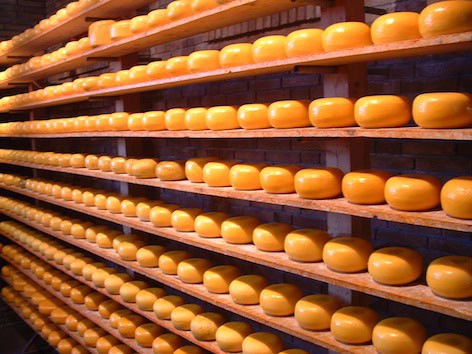
Temperature is very important when it comes to aging. Cheese is stored in cellar or cave type environments which have a closely monitored temperature and humidity. Not all environments are the same though, it all depends on what type of cheese is being made. When it comes to aging, soft cheeses, cooler temperatures are used and the process takes a lot longer because you must age soft cheeses slower to avoid bacteria, in a result of high moisture. If you want to age firm cheeses, high temperatures are used to get rid of excess moisture.
For general aging, the temperatures of the environments that aging takes place in a range between 10 degrees C to 15 degrees C. High moisture conditions are pretty normal, along with at least 80% humidity upwards.
Aging Techniques
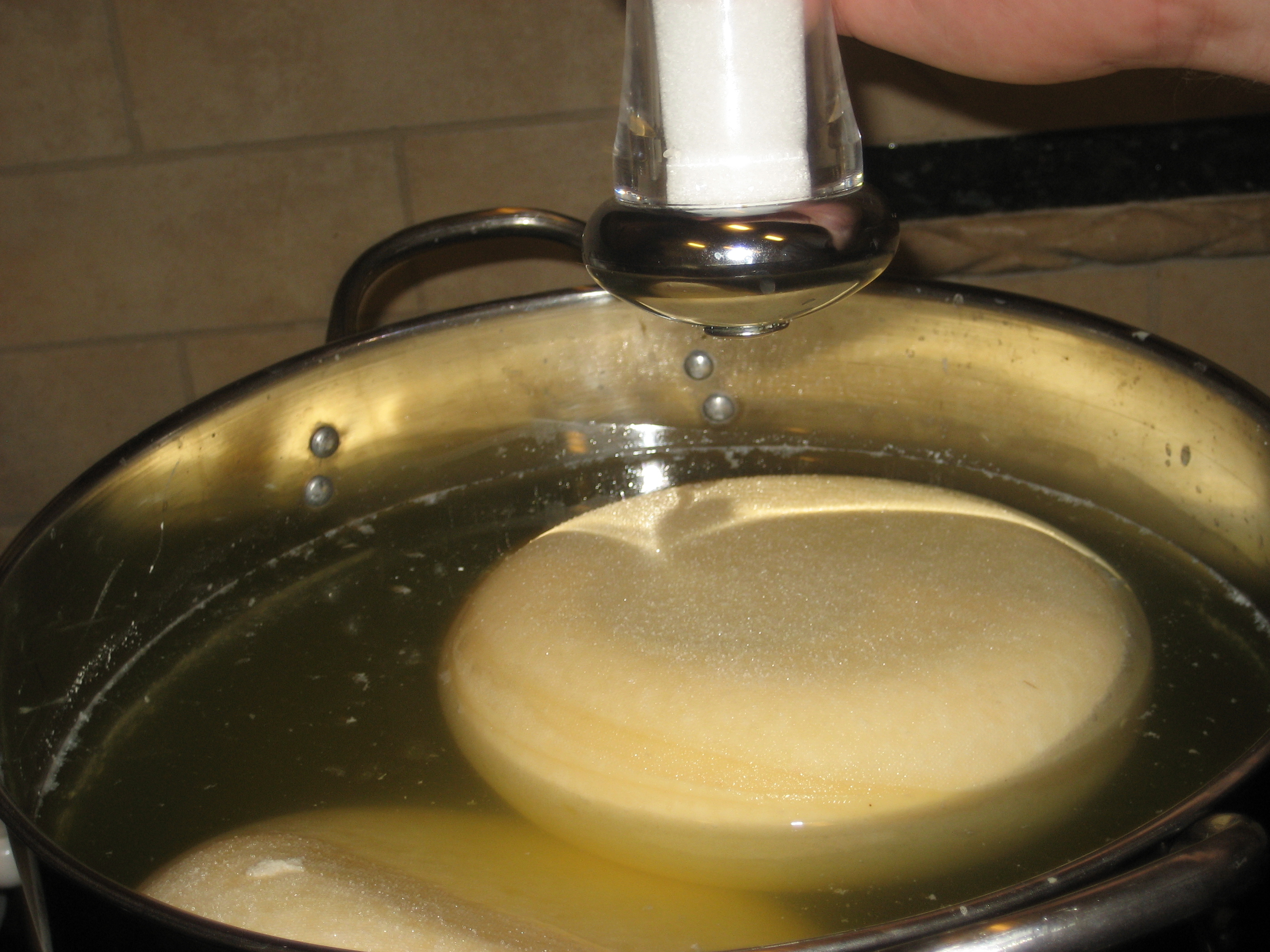
Like many things, there are different ways to age cheese. Lots of different techniques are used to make many of the amazing cheeses we love. There are two main techniques which are called surface ripening and interior ripening.
For surface ripening, the aging begins on the outside of the cheese and progresses towards the inside. To encourage the growth of rind, microorganisms are rubbed onto the outer surface of the cheese. Brie, Munster, Morbier are an example of surface ripened cheeses which are also washed in a saltwater brine during the process. Sometimes, the brine is seasoned with wine and spices which carry flavor into the cheese and nurtures bacterial growth.
When it comes to interior-ripened cheeses, it is opposite to surface ripening and begins from the inside of the cheese and moves outward. The cheese is coated with wax to prevent further oxygen action on the surface, once it is done aging. Examples of an interior- ripened cheeses are Cheddar and Swiss.
For interior-ripened blue cheeses such as Gorgonzola, Stilton, and Roquefort, they contain additional bacteria and molds introduced to them during an aging period. Sometimes, the Penicillium molds are injected into the curd whereas other times, the microbes are already present in the air and grow within the aging cheese. For these molds, they grow into small fissures within the cheese, creating the famous blue-green veins and sharp flavor throughout the cheese.
Have You Tried These Imported Cheeses?
Although importing cheeses is not exactly the greatest thing for the environment, it is great having so many amazing choices. Importing and exporting opens up new worlds, new realities for all of us cheese lovers. Even then, with so much choice, we can sometimes stick to the safe options and what we know; with this, we should definitely experiment and broaden our horizons.
Here are some of the best imported cheese with great variety at the same time:
Italian

Fontina
Although other countries produce their own version of this cheese, Italy’s version is definitely one of a kind, identified by its stamp. This semi-soft cow’s milk cheese has a rind that forms naturally because of the aging process, the interior color is yellow or orange-brown. The texture is different depending on the age. When it is younger, the cheese is a lot more flexible and melts well, so it is ideal for fondues or casserole dishes. When the cheese is matured, it is firmer and grates well.
Caciocavallo
This is a semi-hard cheese which is made from either cow’s or more interestingly- ewes milk. The process which is used when producing this cheese involves spinning the crafted cheese strings into pear shapes that are then cured in brine or salt for a couple days. The string is then tied around the neck to create a separate ball above the main boy of cheese. It is then aged by being hung over poles.
Spanish

Valdeon
This blue cheese is made from goat’s and cow’s milk. It comes from the Picos de Europa mountain range, being mature in limestone caves, traditionally, for at least 2 months. The flavor is tangy and earns its place on a cheeseboard or fits perfect in recipes which need blue cheese.
The Drunken Goat
I know what you’re thinking, what a strange name! However, despite all the things a drunken goat could mean, this is a goat’s milk cheese from the Spanish Mediterranean coast. This cheese has a purple rind and gets the ‘drunken’ from the fact that it is cured in red wine. See, it wasn’t what you thought and is delicious in every way!
French











